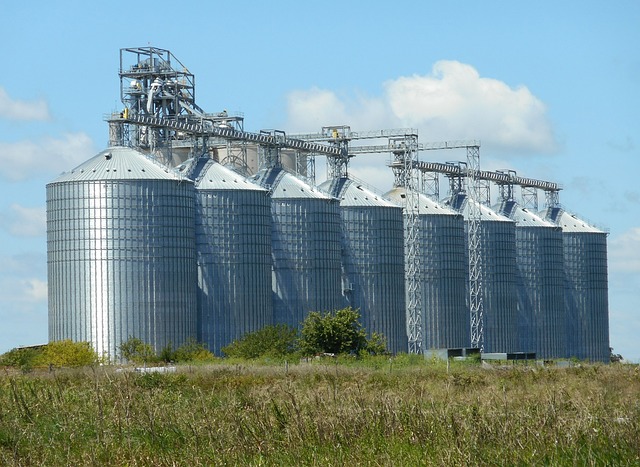The Role of Energy Storage in Climate Resilience
As the effects of climate change become increasingly evident through extreme weather patterns, rising sea levels, and shifting ecosystems, the necessity for a resilient energy infrastructure is more critical than ever. One of the most pivotal elements of this infrastructure is energy storage, which provides the flexibility and reliability needed to support a sustainable future. This article delves into the multifaceted role of energy storage systems in enhancing climate resilience, discussing their importance in renewable energy integration, grid stability, and emergency preparedness.
Understanding Energy Storage
Energy storage refers to a range of technologies capable of storing energy for use at a later time. These systems play a crucial role in managing supply and demand, particularly given the intermittent nature of renewable energy sources like solar and wind. Energy storage technologies include batteries (such as lithium-ion, lead-acid, and flow batteries), pumped hydroelectric storage, compressed air energy storage, and thermal energy storage.
In the context of climate resilience, energy storage systems are not just about storing electricity; they are also about ensuring that communities can adapt to and recover from climate-related stresses.
Enhancing Renewable Energy Integration
The transition from fossil fuels to cleaner energy sources is essential for combating climate change. However, the variability of renewable energy sources presents challenges in integration. Energy storage solutions bridge this gap, allowing excess energy generated during peak production times to be stored and dispatched when demand is high or generation is low. This capability is crucial for maintaining a stable and reliable energy supply.
For example, solar energy tends to peak during the day, while demand often spikes in the evening. Energy storage systems can absorb excess solar power when it is abundant and release it during evening hours when the demand increases. This ability to modulate supply not only improves grid reliability but also enhances the overall efficiency of renewable energy use.
Supporting Grid Stability
Energy storage systems contribute significantly to grid stability, which is increasingly threatened by the integration of distributed energy resources and the substantial shifts in weather patterns caused by climate change. Energy storage can provide ancillary services such as frequency regulation and voltage support, which are essential for maintaining grid reliability.
During times of unexpected demand surges or sudden drops in generation due to adverse weather conditions, energy storage can quickly provide the necessary energy to stabilize the grid. This rapid response capability is vital for preventing blackouts and ensuring that energy systems remain resilient against climate impacts.
Promoting Energy Equity and Access
As the consequences of climate change disproportionately affect vulnerable communities, ensuring equitable access to reliable energy sources becomes paramount. Energy storage systems can play a transformative role in promoting energy equity by enabling decentralized energy solutions.
For instance, communities in remote or underserved areas can deploy localized energy storage systems in conjunction with renewable generation. This not only provides an independent energy supply but also enhances resilience to climate-related disruptions, such as hurricanes or wildfires that may damage centralized energy infrastructure.
Aiding Emergency Preparedness
In the face of increasing climate threats, energy storage systems serve as a critical component of emergency preparedness strategies. These systems can function as backup power sources during outages caused by extreme weather events. In addition, they provide essential power for critical services such as hospitals, emergency shelters, and communication networks during crises.
The integration of energy storage into disaster response plans can enhance community resilience by ensuring that essential services remain operational despite the challenges posed by climate-related emergencies. This capability not only aids rapid recovery efforts but also reinforces the overall strength of a community in the face of adversity.
Reducing Dependence on Fossil Fuels
An effective energy storage system can significantly reduce dependence on fossil fuels, which are a major contributor to greenhouse gas emissions. By facilitating the use of renewable energy and allowing for more efficient use of existing energy resources, energy storage systems can help transition society towards a cleaner energy future.
As energy storage becomes more widely adopted, the cumulative effect can yield substantial reductions in carbon emissions. Transitioning away from fossil fuels not only addresses the root causes of climate change but also mitigates the associated social and environmental impacts that arise from dependency on these resources.
Economic Implications
The implementation of energy storage technologies can present numerous economic opportunities as society adapts to a changing climate. The energy storage industry is rapidly growing, and it is expected to create jobs in manufacturing, installation, and maintenance. Moreover, energy storage can help reduce overall energy costs by lowering peak demand charges and providing more efficient energy management.
Investments in energy storage systems can lead to improved energy resilience for businesses and communities, enhancing their ability to withstand economic disruptions caused by climate-related events. In this sense, energy storage is not merely a technological solution but a crucial economic strategy as well.
Challenges and Considerations
While the benefits of energy storage in enhancing climate resilience are significant, several challenges need to be addressed for widespread adoption. Issues such as the environmental impact of manufacturing batteries, the need for recycling solutions, and the initial costs of energy storage installations must be carefully considered.
Policies and regulations must evolve to encourage the development of sustainable energy storage solutions that minimize negative environmental and social impacts. Incentives for research and development can also facilitate advancements in technology, leading to more efficient, less costly solutions that contribute positively to climate resilience.
The Path Forward
To fully realize the potential of energy storage in enhancing climate resilience, a concerted effort between governments, businesses, and communities will be essential. Policies that promote renewable energy and energy storage technology, coupled with public-private partnerships, can be instrumental in advancing energy resilience initiatives.
Education and community engagement are also vital in raising awareness about the benefits of energy storage systems. By empowering individuals and communities to invest in and adopt storage solutions, society can foster a culture of resilience that will thrive in a changing climate.
Conclusion
The role of energy storage in climate resilience cannot be overstated. By enabling the integration of renewable energy, enhancing grid stability, promoting energy equity, and supporting emergency preparedness, energy storage presents a multifaceted solution to some of the most pressing challenges posed by climate change. As we look ahead to a future defined by environmental uncertainty, investing in energy storage systems is not merely an option; it is an essential component of building a sustainable and resilient energy landscape.
Ultimately, the transition to a more resilient and sustainable energy system depends on how effectively we harness the capabilities of energy storage technologies. The choices we make today will shape the energy landscape of tomorrow and influence our ability to adapt to a changing climate.










